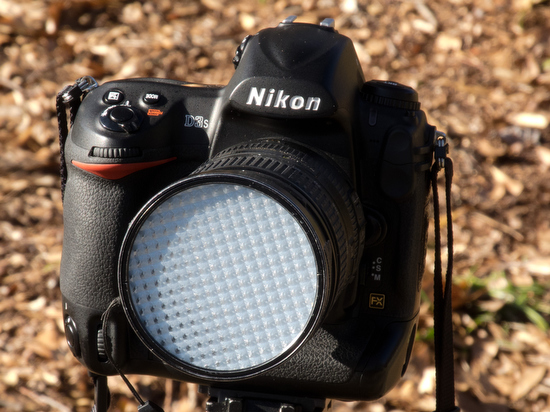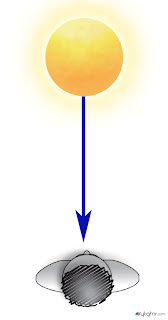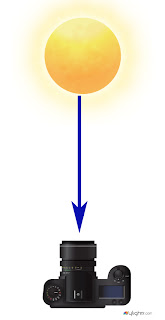Hey Stanley, can you back up and explain this Ambient Light and under 3 stops thing you mentioned in that last post?
I had a few people write to me asking similar questions. So, let's delve into this subject of ambient light and under or over exposing with a flash.
Step One: Get An Ambient Reading
You need a starting place to be your base exposure. Everything else will relate to this exposure. I took a picture of the top of my Nikon D3S with a 28-300mm Nikkor lens. I just pointed across the room for this example. With ISO 200 I have a f/3.5 aperture at 1/10 shutter speed. This is my Ambient Reading with no flash.
Step Two: Use your Nikon SB900
You can use whatever hotshoe flash for your manufacturer you have, but it must be a TTL flash or this will not work as easily.
Step Three: Slow or Rear Curtain Sync
You need to set your flash setting as I have done in the above photo to Slow or Rear Curtain Sync. This tells the flash and the camera that please use the Ambient setting on the camera and then add the flash to the exposure without over exposing the photo.
Take a photo with this setting as I did in the photo above here. This will basically light everything up. I am bouncing my flash with the diffusion dome on the flash for this photo. It is still getting light from the window, but the flash is filling in everything thing closest to the camera. The background is brighter, but since it is further from the flash it is not as bright as the statue.
Step Four: Adjust the flash power under 3 stops
The reason I choose to go 3 stops under is this is as low as I can go in TTL mode and the camera figuring it all out for me.
With the camera not changing the setting and then telling the flash to underexpose by -3.0 stops you get the results here.
 |
| Available Light only (Nikon D3S, ISO 12,800, f/5.6, 1/40, 28-300mm) |
You need a starting place to be your base exposure. Everything else will relate to this exposure. I took a picture of the top of my Nikon D3S with a 28-300mm Nikkor lens. I just pointed across the room for this example. With ISO 200 I have a f/3.5 aperture at 1/10 shutter speed. This is my Ambient Reading with no flash.
Step Two: Use your Nikon SB900
You can use whatever hotshoe flash for your manufacturer you have, but it must be a TTL flash or this will not work as easily.
Step Three: Slow or Rear Curtain Sync
You need to set your flash setting as I have done in the above photo to Slow or Rear Curtain Sync. This tells the flash and the camera that please use the Ambient setting on the camera and then add the flash to the exposure without over exposing the photo.
 |
| Fill Flash normal setting (Nikon D3S, ISO 12,800, f/5.6, 1/20, 28-300mm) |
Step Four: Adjust the flash power under 3 stops
The reason I choose to go 3 stops under is this is as low as I can go in TTL mode and the camera figuring it all out for me.
 |
| On the Nikon SB900 you push the button in the far upper left and it will cycle all the way through under and over exposures. Stop on the -3.0 EV. EV stands for Exposure Value. |
 |
| Fill Flash set -3.0 (Nikon D3S, ISO 12,800, f/5.6, 1/30, 28-300mm) |
You can also adjust the camera exposure and the flash exposure and get even more results.
 |
| Silhouette |
 |
| Reveal |
Silhouette and Reveal
Again I must give credit to Dave Black for coining this terminology. I have been doing this for years, but loved how he made this sound very artistic, by using a french word it really sounds artistic.
Here is how you do this photo.
Step One: Take a normal ambient reading
Very similar to the above example. Everything will look normal.
Step Two: Underexpose the photo by 2 or three stops
 |
| On the Nikon D3S the button to the right of the shutter you depress which lets you stay in Auto setting like Aperture Mode and underexpose or overexpose an image. |
 |
| When you depress it should look like this if you have never done it before. If you see something else, this maybe why your photos are under or overexposed. |
 |
| With it depressed turn the wheel on the back of the camera. Here it is at -1 stop. I would shoot -1 stop, one at -2 stops and even -3 stops and pick the one that the subject is best silhouetted. |
Step Three: Set flash setting to just the opposite + stops
If you picked three stops under then you are going to set your flash to three stops over. You see now where the flash hits the subject will give you a perfect exposure.
[-3] + [+3] = 0
For the photo above I had the Nikon SB900 off the camera being fired by the SU800 on my camera.
 |
| Nikon SU800 triggers your SB900 off camera using infrared signal. Here you can control up to 3 different settings of multiple flashes. Here if I had three flashes and each one of them setup to work on A, B or C then I can control them from the camera individually. For the above example I used a SB900 and SB800 both going off with +3 Flash setting as compared to the -3 on the camera setting. It doesn't matter if I had 100 flashes the camera will only let them fire all together only +3 stops. I love this technology. |
 |
| Silhouette |
 |
| Reveal |






































